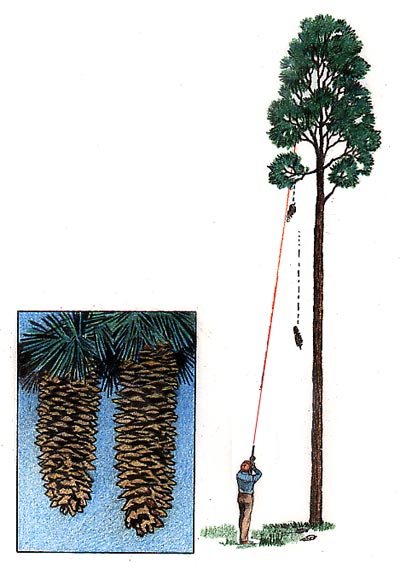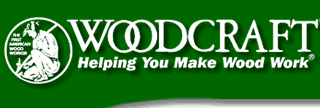SPLINTERS
Tennessee Valley Woodworkers
 Vol. 20/ Issue 5
May 2005
Editor: Tom Gillard Jr.
Vol. 20/ Issue 5
May 2005
Editor: Tom Gillard Jr. 

Meeting Notice:
The next meeting of the TN Valley Woodworkers
Will be held, May 17th at 7:00 p.m. in the
Duck River Electric Building, Decherd, TN
All interested woodworkers are invited!


Please remember, in your thoughts and prayers,
all our Troops around the world and those on the way home.

The following people have agreed to serve as contacts for their particular
skills. If you have questions, suggestions for activities, or other
comments relating to these skills, please call these folks. Their
interest is to help the club better serve their area of expertise.
Your participation with them will help them achieve that goal.
Design: Tom
Cowan 967-4835
Finishing: Phil
Bishop 967-4626
Turning: Tom
Church 967-4460
Carving: Harry
May 962-0215
Sharpening: Bob
Reese 728-7974
Joinery: Ross
Roepke 455-9140
Maurice Ryan 962-1555
Health and Safety

List of Club Officers
President:
Loyd Ackerman
V. President: Tom
Cowan
Secretary: Chuck
Taylor
Treasurer: Henry
Davis
Publicity: Larry
Bowers
Newsletter Editor: Tom Gillard Jr.
Web-Master: Richard Gulley
Calendar of Events:
May 14: Turning Bee Tom Cowan's place
May 21: Picnic Belvedere Falls Mill
September 19: CC Fair 24 Manchester
October: Fall Seminar To Be Determined
December 9th:: Holiday Party / 20th: Anniversary
celebration at American Legion in Tullahoma.
This is a special message for those intending to attend the TVW Turning
Bee at Tom Cowan's shop on May 14. There will be an informal "Instant
Gallery" at the event. Attendees are encouraged to bring a sample
of their wood turnings to exhibit in the gallery. There will be no
formal presentation involved. Please pass the word along to
those without email. If you have any questions concerning the
Turning Bee please email me or call me at 393-3191. Henry
IT'S PICNIC MONTH !
Greetings Fellow Club Members! Your Picnic Committee wanted me
to remind you to check your calendars and be sure the 21st is marked for
the club picnic/auction.
The Picnic is at Falls Mills on May 21st, arrive at 5:00 PM.
Bring a covered dish, the Club will furnish BBQ and solf drinks.
Bring a lawn chair.
Bring an item or two for the Auction. This is the club's major
fundraiser, so please be generous, items you have made always bring a premium
price.
If you have questions or comments please email or call me, Henry, at
393-3191.
Directions to Falls Mill:
From Winchester take US-64 West. Go approx. 11 miles.
Turn right on Old Salem Lexie Rd. go 1.2 miles
Turn left on Falls Mill Rd. go .2 miles
Mill on the right.
See you on the 21th,
The Club will be selling tickets for two drawings to be held at
the Club picnic on May 21 at Falls Mill. Drawing prizes are the Delta
Dust Collector donated by the Delta development team that did the program
in February and a Jet Mini Lathe donated by General Industrial Supply.
Tickets will continue on sale at the Club meetings in April and May and
again at the picnic itself. Consider this as a donation to the Club
with a chance to win a great prize.
Tickets will be available for $3 each or 2 for $5 to Club members and
guests. There will be two boxes. One for white tickets and
another for red. Purchasers are to write their names on the back
of the ticket half to be put into the appropriate box. You
do not need to be present to win.
A third item, the router bit set donated by Wayne Sutter of Woodline
at the March meeting, will be auctioned at the picnic and will go to the
highest bidder.
Funds generated will be put into the Club treasury and earmarked for
purchase of audio/video equipment and support of Club celebration events.
Larry Bowers will be selling the tickets.
SHOW AND TELL
Maurice Ryan brought two jewelry boxes
he made from poplar. The top insert was light colored poplar.
Bob Lowrance displayed two gold finch
carvings
with painted finishes.
Bob Reese brought and discussed an early 1900 tater-bug
backed mandolin that he had restored. He also displayed a segmented
bowl (132 pieces) made from walnut, maple and rosewood.
Ken Gould brought a cherry handled roughing gouge (two inch) he forged
from a truck leaf spring.
Bill Knight showed two bowls (1)
(2), including lids. He also had
lots
of toys he made. They included airplanes, cars, bulldozer, tank, helicopter,
tractor/wagon and an old-time truck.
Ross Roepke displayed a natural board
clock. He also discussed some tools he routinely uses. They included
a strap wrench he uses for gluing up boxes (Harbor Freight $4.99), a glue
dispenser, mortising jig and a 35-piece router bit set (Heartland $40).
Henry Davis showed a table he made with plans from the Woodsmith magazine.
The table had red oak legs (ebonized
with India ink). The top and inserts were maple. He discussed the unusual
joinery used to make the table.
Doyle McConnell brought a segmented
walnut pedestal. He discussed the special cutter used for joining the
segments. He also brought a goblet
and vase he had made for gifts. He
gave away some book match veneer.
Tom Gillard displayed a reproduction of a mantle
clock he made for a customer and a keepsake
box made from magnolia with mahogany handles and corner feet.
Steve Savelle brought some home-made
tools. The included a bevel gage (maple blade), chamfer plane (maple,
walnut, blade made from file), carving mallet (Osage orange) and a marking
knife (walnut handle).
Dick Wollam brought a carving with
pine inlays and the drawing he used to produce the carving. The finish
was clear enamel.
Loyd Ackerman discussed the segmented vessel that he had constructed
using blood wood, lyptus, red heart and maple.
Bob Lowrance displayed his three bear
family carvings.
TOOLS & TECHNIQUES Human Proportions
While there are lots of subtle differences between individuals, human
proportions fit within a fairly standard range. In figure carving, the
basic unit of measurement is the head, which is the distance from the
top of the head to the chin. This handy unit of measurement is reasonably
standard, and has long been used to establish the proportions of the human
figure. The following proportions should help in keeping your carvings
pleasing to the eye:
Human Figure:
-
Average Of 7-1/2 HL
-
Shoulder Width: 3 HW Or 2 HL
-
Distance From The Hips To Toes: 4 HL
-
Torso Length (Hips To Shoulders): 2-1/2 HL
-
Neck: 1/4 HL
-
Hands: 3/4 HL
-
Lower Arm: 1-1/4 HL
HL = Head Lengths HW = Head Widths
Thanks to Richard Gulley
Sugar pine California's Gold Rush Tree
 When
James Marshall discovered gold at Sutter's Mill on the American River in
1848, the California Gold Rush began. So did the mass harvest of the sugar
pine, the largest North American pine.
When
James Marshall discovered gold at Sutter's Mill on the American River in
1848, the California Gold Rush began. So did the mass harvest of the sugar
pine, the largest North American pine.
John Sutter had set up his mill at Coloma to saw sugar pine. The tree's
tremendous size--200' heights and diameters of 18' have been recorded--meant
lots of quality boards from a tree. And the wood was lighter and easier
to work than other pines.
Little did Sutter suspect how his lumber business would boom with the
coming of the prospecting Forty-niners. They quickly created demand for
boards to build mining shacks, sluice boxes, and flumes to extract the
gold from river banks and stream beds. It became shoring for mines and
bridges to cross the waterways. Sugar pine was used for homes, stores,
and roof shingles.
After the Gold Rush, settlers began farming and ranching in the valleys.
And just as before, the sugar pine yielded wood for their barns and fences,
even though the remaining trees were 100 miles away.
As California's fruit-growing industry developed, growers turned to
the sugar pine for boxes and crates because it imparted no taste to the
fruit. It was also good-looking.
Even after 150 years of harvesting, sugar pine still grows in commercial
amounts in California and Oregon. But to ensure future trees, forest managers
have been known to hire sharpshooters to drop the large (10-20" long),
otherwise uncollectible, unopened cones from the towering treetops!
Illustration: Jim Stevenson. Wood Online
Web Sites of interest.
Wood Central
See you on the 17th.
click on the image to go to these sites
Special contributors to Club functions



 Vol. 20/ Issue 5
May 2005
Editor: Tom Gillard Jr.
Vol. 20/ Issue 5
May 2005
Editor: Tom Gillard Jr. 
![]()
![]()

 When
James Marshall discovered gold at Sutter's Mill on the American River in
1848, the California Gold Rush began. So did the mass harvest of the sugar
pine, the largest North American pine.
When
James Marshall discovered gold at Sutter's Mill on the American River in
1848, the California Gold Rush began. So did the mass harvest of the sugar
pine, the largest North American pine.

